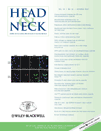Maxillary reconstruction using the scapular tip free flap: A radiologic comparison of 3D morphology†‡
Poster at the American Head and Neck Society Annual Meeting, May 27, 2009, Scottsdale, Arizona.
Jeffrey H. Siewerdsen has a conflict of interest with Carestream Health Inc. in which he is on the Medical Advisory Board and had a research grant collaboration. He is also on the International Adivsory Board and had a research grant collaboration with Siemens Healthcare.
Abstract
Background
Scapular tip osteomyogenous free flaps have been described for complex palate reconstruction. Minimal osteotomies are needed because of the similar shapes of the scapula and palate. We compared the bony morphology of the palate and scapular tip to determine the suitability of the scapular tip for palate reconstruction.
Methods
We analyzed facial and chest CT images of 10 patients, comparing the morphology of 3 simulated palate resection specimens (total palate, subtotal palate, and hemipalate) with corresponding simulated scapular tip bone flaps from the same patient.
Results
Conformance distances between palates and simulated flaps were small, indicating close shape similarity. Median conformance distances were 3.44 mm for hemipalatectomy, 3.56 mm for subtotal palatectomy, and 3.71 mm for total palatectomy. Six outlier observations accrued from 2 patients.
Conclusions
Based on this analysis, there is close similarity between the shapes of the palate and the scapular tip. This similarity supports use of the scapular tip flap for selected palate defects. © 2012 Wiley Periodicals, Inc. Head Neck, 2012




